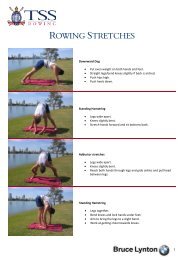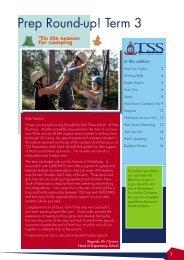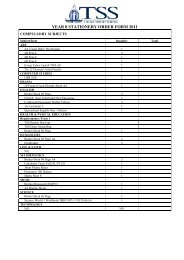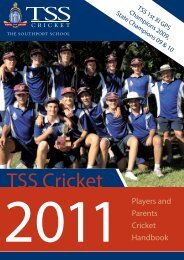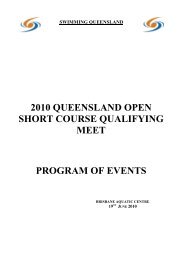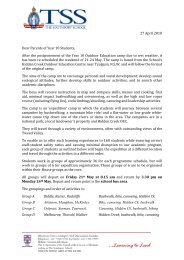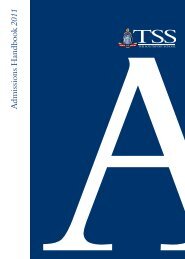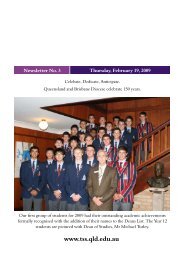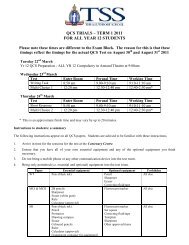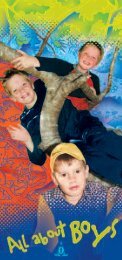Gifted and Talented (GAT)
Gifted and Talented (GAT)
Gifted and Talented (GAT)
Create successful ePaper yourself
Turn your PDF publications into a flip-book with our unique Google optimized e-Paper software.
What is curriculum differentiation<br />
Differentiation ranges from slight to major modifications of the curriculum through<br />
adjustments to content, processes <strong>and</strong> skills. It provides a planned, documented<br />
<strong>and</strong> challenging curriculum that matches the ability of gifted students to:<br />
• learn at faster rates<br />
• find, solve <strong>and</strong> act on problems more readily<br />
• manipulate abstract ideas <strong>and</strong> make connections to an advanced<br />
degree<br />
Differentiation should include enrichment <strong>and</strong> extension activities. Enrichment<br />
refers to the broadening of the curriculum to develop knowledge, application,<br />
thinking skills <strong>and</strong> attitudes, to a degree of complexity appropriate to the<br />
student’s developmental level (Braggett, 1997). Enrichment activities need to be<br />
written into unit planners to ensure all students have access to them. Extension<br />
activities involve the deepening of students’ knowledge, underst<strong>and</strong>ing <strong>and</strong> skills.<br />
A differentiated curriculum is a program of activities that offers a variety of entry<br />
points for students who differ in abilities, knowledge <strong>and</strong> skills. In a differentiated<br />
curriculum, teachers offer different approaches to what students learn (content),<br />
how students learn (process) <strong>and</strong> how students demonstrate what they have<br />
learned (product). Differentiated instruction is a mix of whole-class, group <strong>and</strong><br />
individualised activities. (NSW Department of Education <strong>and</strong> Training, 2004)<br />
Differentiated programming is:<br />
• having high expectations for each student;<br />
• permitting students to demonstrate mastery of material they already know<br />
<strong>and</strong> to progress at their own pace through new material;<br />
• providing different avenues to acquiring content, to processing or making<br />
sense of ideas, <strong>and</strong> to developing products;<br />
• providing multiple assignments within each unit, tailored for students with<br />
differing levels of achievement;<br />
• allowing students to choose, with the teacher’s guidance, ways to learn<br />
<strong>and</strong> how to demonstrate what they have learned; <strong>and</strong><br />
• flexible: teachers move students in <strong>and</strong> out of groups, based on students’<br />
instructional needs.<br />
(Adapted from Tomlinson & Allan, 2000)<br />
Prep <strong>GAT</strong> 11



